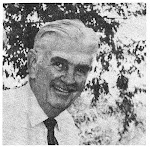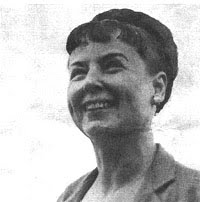Joan Hoffman’s serendipity in the summer of 2009 was the discovery of Holling Clancy Holling murals that once decorated a Chicago restaurant. Such is the stuff of literary—or graphic—archeology that the author, painter and naturalist’s work continues to show up in the oddest places.
Holling Clancy Holling (Aug. 2, 1900-Sept. 7, 1973) has entranced seven decades of young readers with Paddle-to-the-Sea, Seabird, and other stories. Little has been chronicled about this Michigan-born writer who fell in love with the West. Still, Ms. Hoffman and kindred spirits have sustained the small Leslie Area Historical Museum in Leslie, Mich., to perpetuate his memory. And, bit by bit, strange finds keep popping up to broaden our awareness of Holling’s work.
She reports, “In early June, a gentleman, Bob Drake, from Colorado contacted me. In 1934, his grandfather, impressed with Holling’s knowledge of the Southwest, hired the Hollings [Holling and his wife Lucille] to decorate his new restaurant in Chicago that became known as the Ranch Restaurant. Incredibly, when the restaurant closed in the 1950s, Bob’s dad scraped some of the paintings, which had been painted on canvas, off the walls. These remained in an attic until Bob carted them off to Colorado. They now decorate the Drakes’ home. Bob was so kind to share excellent pictures of these murals. They are beautiful pieces of Holling art, mainly depicting Indian food gathering and hunting.”
Such is the detective work of investigators—and museum directors—tracking down elusive literary ephemera. Shortly after my article on Holling appeared in the ABC of Children’s Literature Fall 2008 newsletter, Ms. Hoffman wrote to me, “On [Jan. 21, 2009] one of the Quaker Oats American Frontiers cutouts series that I found on eBay came and I am real pleased with that because it is important in telling the story of Holling. That series opened the door for Holling to work with Houghton Mifflin. The one I got was #10 Lewis and Clark. Each of those showed the explorer, a native of the time (Sa-Ca-Ja-Wea, Bird Woman), a landscape view of the Rocky Mountains, and animals of the region (mule deer, coyote, coneys, mountain goat). Then [the cereal buyer] gets the whole story on what would be the bottom of the box (only 4 1/4 in. x 1 ¾ in.), by using only key words and short phrases.”
A 129-page master's thesis written by Hazel Gibb Hinman in 1958 at the University of Redlands California also contains clues Ms. Hoffman is following. Few children’s books writers enjoy financial comfort and Holling was no different. Ms. Hoffman notes that his illustrations included brochures for Cunard Tours, magazine covers for Junior Home Magazine, covers for American Junior Red Cross News, ads for Packard Clipper and Desoto, work on four projects at Disney Studios over several years, wall murals for the restraurant in Chicago and a hotel in Texas, designing a ranch in Montana, illustrations for Bookhouse, Book Trails, and Absurd Atlas, and the Quaker Oats marketing program.
Learning about the museum, a Holling niece recently donated some 200 Holling letters, original paintings, and colored World Museum newspaper inserts. Ms. Hoffman writes, “Those World Museum inserts are important because they finally allowed the Hollings to be financially independent so they could devote their full time to writing children's books.”
Ms. Hoffman can be proud of the clues Holling admirers provide. The memory of Holling and Lucille is still very much alive in Leslie, Mich., as elements of the past are collected, catalogued and presented to the public.
--Walt Giersbach
w.giersbach@att.net
Subscribe to:
Post Comments (Atom)









No comments:
Post a Comment